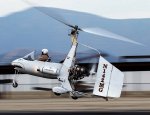Jean Claude
Junior Member
- Joined
- Jan 2, 2009
- Messages
- 2,599
- Location
- Centre FRANCE
- Aircraft
- I piloted gliders C800, Bijave, C 310, airplanes Piper J3 , PA 28, Jodel D117, DR 220, Cessna 150, C
- Total Flight Time
- About 500 h (FW + ultra light)
I understand that the Magni M16 flight manual recommends to wait 60Kt leveling before climbing, when there is no obstacle.
However, CFIs recommend this too, even when the surroundings are crowded with trees.
I simulated the speed / height gain at take-off from a Magni M16 (115 HP) to 450 kg.
The calculation suggests a contrary result.
Comments? Thanks.

However, CFIs recommend this too, even when the surroundings are crowded with trees.
I simulated the speed / height gain at take-off from a Magni M16 (115 HP) to 450 kg.
The calculation suggests a contrary result.
Comments? Thanks.


